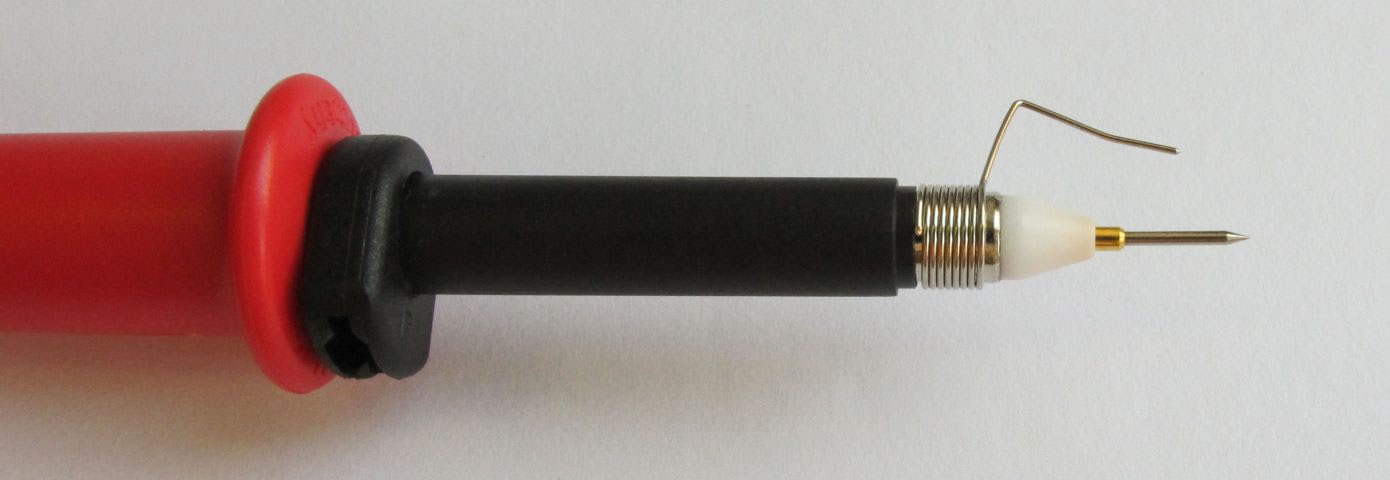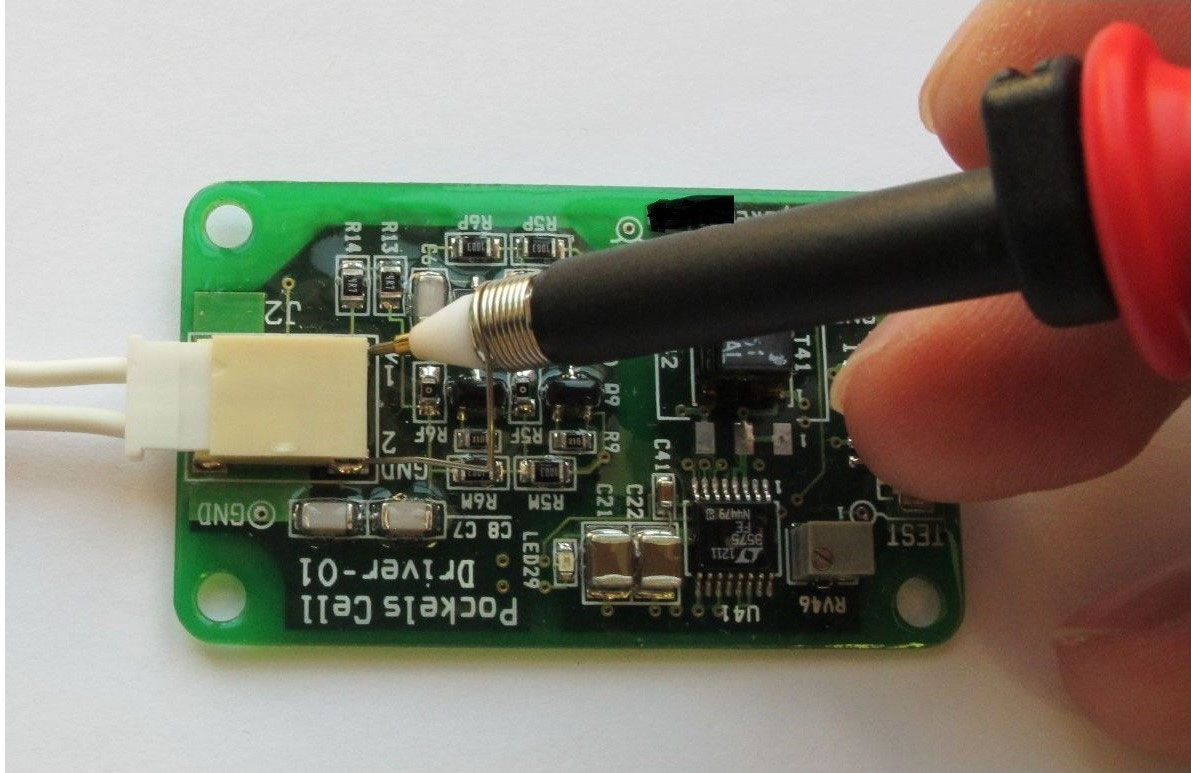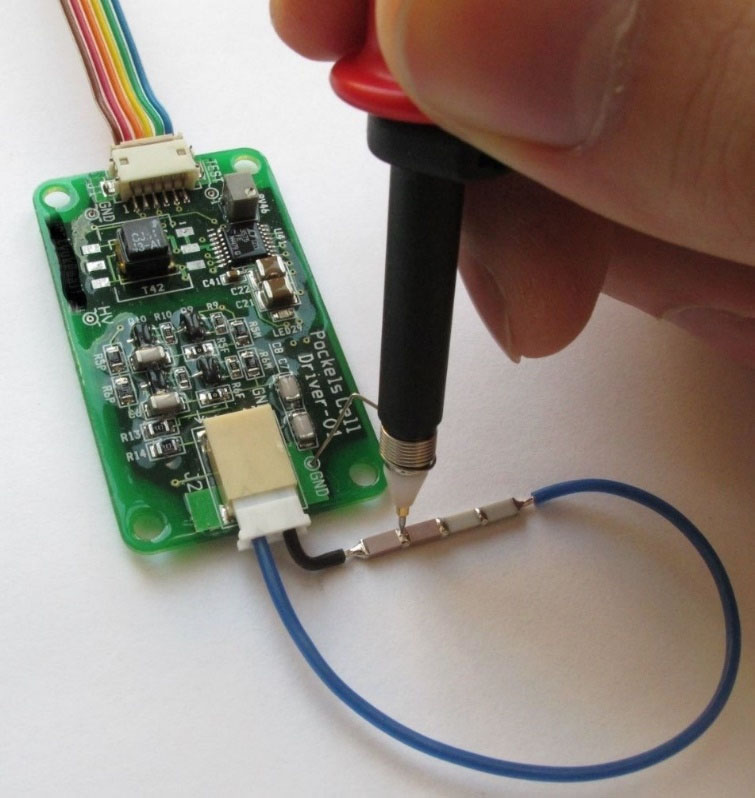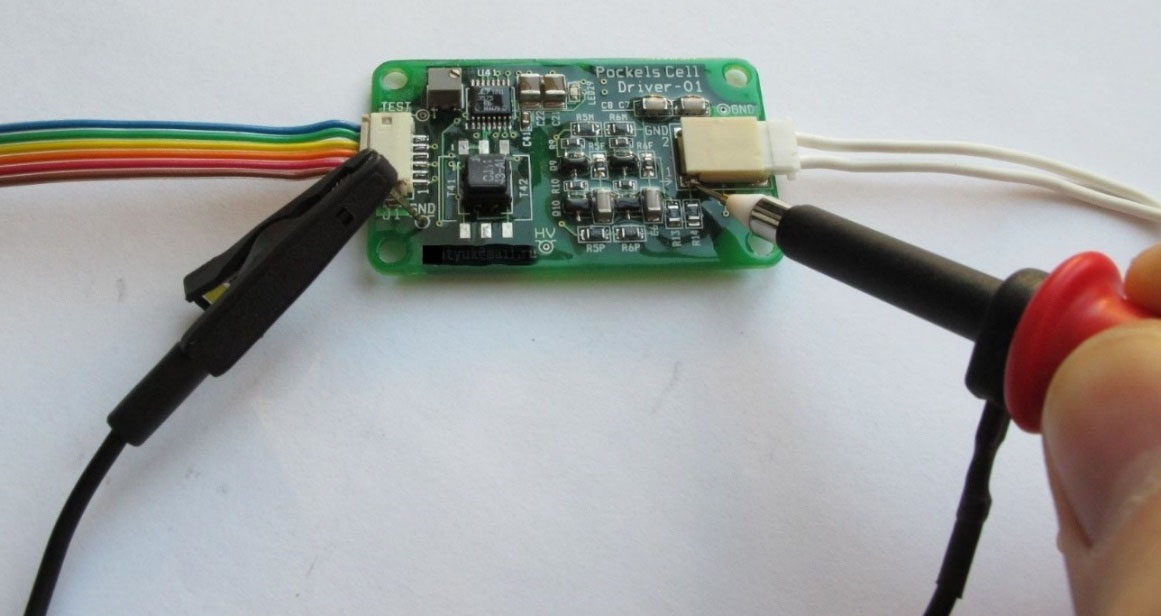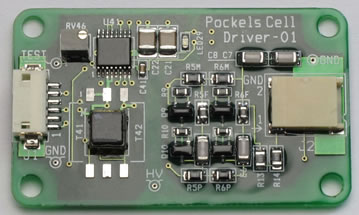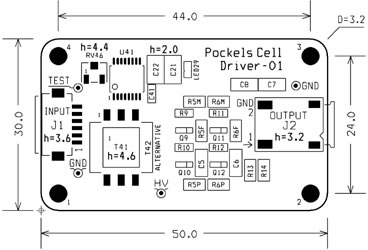Technical Specifications
-
- High-Voltage Amplitude1……………………………………………………………….. 2800 ÷ 3800 V
- HV Pulse-to-Pulse Instability…………………………………………………………………………….. 5 %
- Max Current During Pulse………………………………………………………………………………….. 40 A
- Max Capacitance…………………………………………………………………………………………………….. 50 pF
- Rising Front Duration2 ……………………………………………………………………………………….. 2 ÷ 4 nsec
- HV Pulsewidth (factory-set)3 …………………………………………………………………………… 0.5 ÷ 2 μsec
- Falling Front Duration…………………………………………………………………………………………. 2 ÷ 4 μsec
- Max Repetition Rate (Frequency)
- With 4.6 mm transformer…………………………………………………………………………….. 2 kHz
- With 9.2 mm transformer…………………………………………………………………………….. 5 kHz
- Input TTL Signal Amplitude………………………………………………………………………………. 3 ÷ 12 V
- HV Pulse delay Vs. TTL trigger pulse4……………………………………………………………. 20 ÷ 30 nsec
- Timing Jitter of the HV Pulse Vs. Trigger……………………………………………………… < 900 psec
- Input TTL Signal Amplitude………………………………………………………………………………. 5 ÷ 12 V
- Current:
- 5V/2kHz ……………………………………………………………………………………………………………… 250 mA
- 12V/5kHz …………………………………………………………………………………………………………… 250 mA
- Working Temperature Range…………………………………………………………………………… –40 ÷ +60 °C
- Dimensions ……………………………………………………………………………………………………………… 30 × 50 × 8 mm3
- Mounting Hole Pattern (Æ 3.2 mm) ………………………………………………………………. 24 × 44 mm
1 Is set from the built-in potentiometer or remotely.
2 Depends on the load inductance and HV amplitude.
3 Set during fabrication.
4 Delay depends on the TTL pulse. The higher trigger amplitude, the shorter delay.
Pockels Cell Driver – 01 Connection Diagram
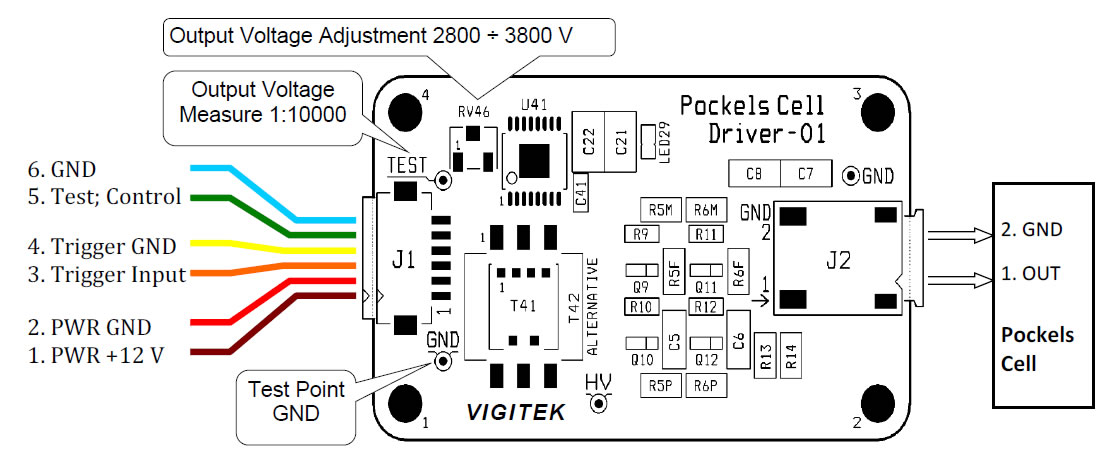
Connector J1 (input):
Pin 1 (brown) – power supply + (5 ÷ 12) V & 250 mA;
Pin 2 (red) – power supply GND;
Pin 3 (orange) – trigger input + (3 ÷ 12) V & 25 mA; rising edge < 50 nsec; duration > 50 nsec;
Pin 4 (yellow) – trigger GND;
Pin 5 (green) – output voltage measure signal; DC voltage scale 1:10000;
Pin 6 (cyan) – output voltage measure GND.
Connector J2 (output):
Pin 1 (HV black) – negative high voltage output signal;
Pin 2 (HV black) – GND.
Note 1. Pin 5 and 6 can be used for setting the amplitude of the output voltage pulse; for instance:
V(out) = 3860 – V(pin5) × 1570 [V] ; or V(pin5) = 2.46 – 0.000637 × V(out) [V] .
For this purpose, using trimmer R46 set the amplitude of the output pulse voltage to 3340 V without connecting the control voltage V(pin5), or 3860V at control voltage V(pin5) is 0V.
The input impedance of the pin 5 is 2.87 kΩ.
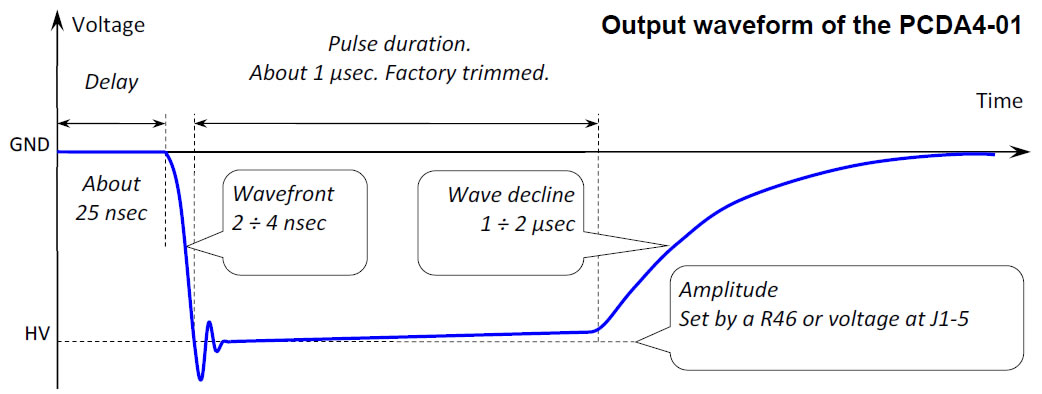
Indirect (non-touching) monitoring of the output pulse waveform.
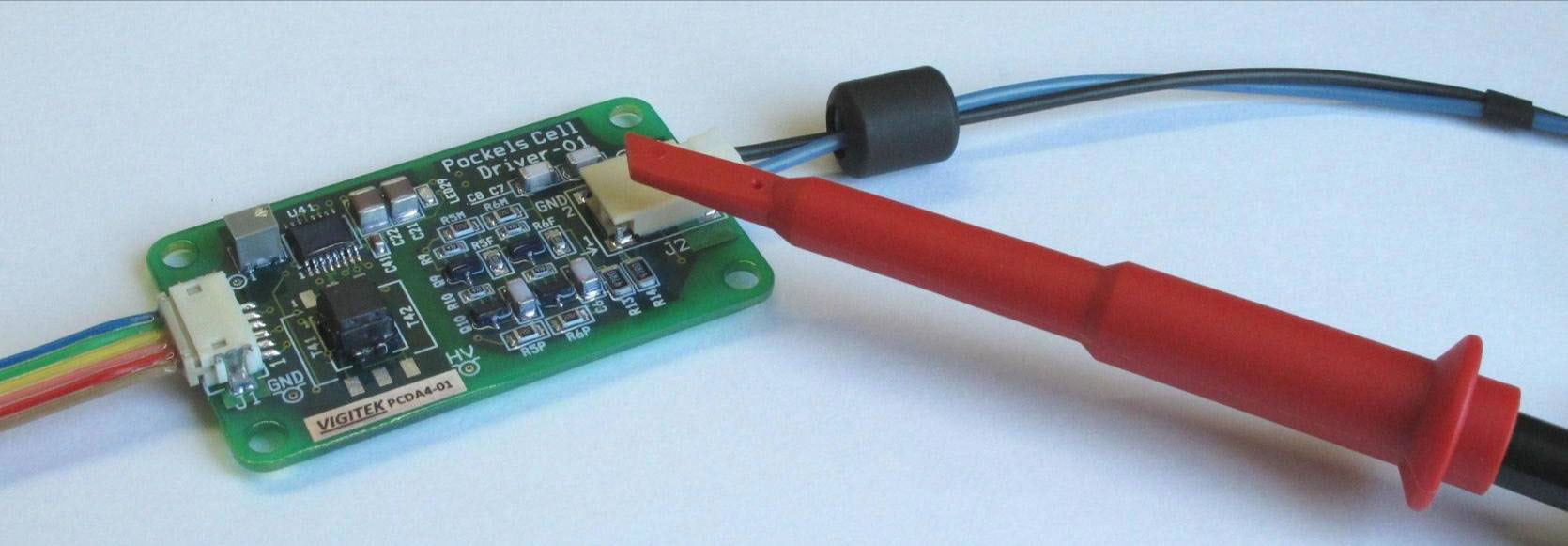
Oscilloscope probe (1:10) must be placed in close proximity to the HV connector (or resistors R13 and R14), but without actually touching it. The scale of the oscilloscope must be set on the 2 ÷ 10 V/D.
Below are the photos of direct oscilloscope measurements of the output HV – please note that all measurements must be carried out only with respect to the GND.
